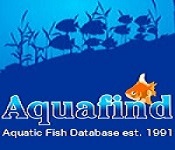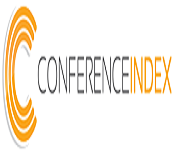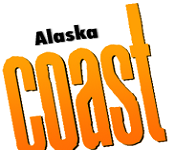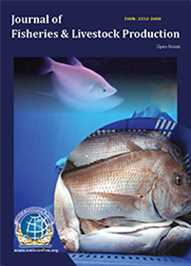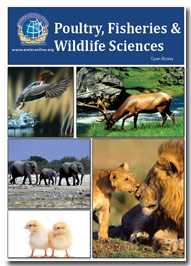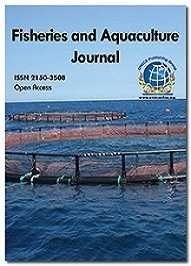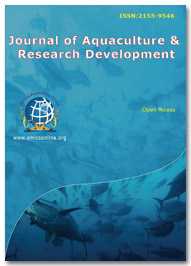Theme: Blue Revolution
Fisheries 2016
Track 1: Fish Farms: Planning a New One
Fisheries conference focusses on fish farming, a form of aquaculture in which fish are raised in enclosures to be sold as food. It is the fastest growing area of animal food production. According to fisheries meeting reports, about half the fish consumed globally are raised in these artificial environments. Commonly farmed species include salmon, tuna, cod, trout and halibut. These “aquafarms” can take the form of mesh cages submerged in natural bodies of water, or concrete enclosures on land. As is the case with industrial animal farms on land, the fish are often housed in unnaturally crowded and cramped conditions with little room to move. Fish may suffer from lesions, fin damage and other debilitating injuries. The overcrowded and stressful conditions promote disease and parasite outbreaks - such as sea lice - that farmers treat with pesticides and antibiotics. The use of antibiotics can create drug-resistant strains of diseases that can harm wildlife populations and even humans that eat the farmed fish. The aim of organizing the fisheries event is to supply exposure to technologies and international tie-ups and to supply data regarding recent trends in fisheries and aquaculture.
Related conferences:
4th International Conference on Fisheries & Aquaculture November 28-30, 2016,San Antonio, USA; 2nd Global Summit on Aquaculture & Fisheries July 11-13, 2016, Kuala Lumpur, Malaysia; 3rd International Conference on Aquaculture & Fisheries September 29-October 01 2016, London, UK; 4th International Conference on Oceanography & Marine Biology July 18-20, 2016, Brisbane, Australia; 7th World Fisheries Congress, Busan, May 23-27, 2016, Korea; 3rd International Conference on Fisheries and Aquaculture 2016 August 24-25, Negombo, Sri Lanka; 17th International Symposium on Feeding and Nutrition in Fish June 05-10, 2016, Idaho, USA;
Related Societies:
World Aquaculture Society, USA; American Fisheries Society, USA; European Aquaculture Society, Belgium; US Aquaculture Society, USA ; National Aquaculture Association, Florida; Asian Fisheries Society, Malaysia; Saudi Aquaculture Society, Saudi Arabia; Michigan Aquaculture Association, USA; Aquaculture association of Canada, Canada; Australian Marine Conservation Society, Australia;
Track 2: Fish Capture and Fishing Gears
According to fisheries conference, when evaluating the sustainability of any sea food, one of the key considerations is the ecological impact associated with the fishing gear used to capture a species. The same species, caught using different gears may have very different environmental consequences. There are many types of fishing gear and they all impact the marine environment (marine life and habitat) in different ways and to different degrees. This is why the same species may have different rankings depending to the gear that was used to catch it. For example, tuna caught using surface or pelagic long lines often appears as a yellow or red choice because these fishing methods result in high volumes of by catch and the death of marine birds, marine mammals and sea turtles. The same species of tuna caught using troll lines is a green choice because this fishing method has a significantly smaller by catch. Fisheries meeting bring the researchers together to present and discuss their work.
Related conferences:
4th International Conference on Fisheries & Aquaculture November 28-30, 2016,San Antonio, USA; 2nd Global Summit on Aquaculture & Fisheries July 11-13, 2016, Kuala Lumpur, Malaysia; 3rd International Conference on Aquaculture & Fisheries September 29-October 01 2016, London, UK; 4th International Conference on Oceanography & Marine Biology July 18-20, 2016, Brisbane, Australia; 7th World Fisheries Congress In Busan, May 23-27, 2016, Korea; 3rd International Conference on Fisheries and Aquaculture 2016 August 24-25, Negombo, Sri Lanka.
Related Societies:
Wisconsin Aquaculture Association, USA; American Fisheries Society, USA; European Aquaculture Society, Belgium; World Aquaculture Society, USA; National Aquaculture Association, Florida; Asian Fisheries Society, Malaysia; Saudi Aquaculture Society, Saudi Arabia; Michigan Aquaculture Association, USA; Aquaculture association of Canada, Canada; Australian Marine Conservation Society, Australia;
Track 3: Deep Water and Demersal Fisheries
Fisheries conference gives information about deep water and demersal fisheries. The deep-water demersal fishes are generally divided into two categories, benthic and bentho-pelagic. The benthic fishes are those that have a close association with the seabed and include species such as skates and flatfishes. Bentho-pelagic fishes are those that swim freely and habitually near the ocean floor and, in the areas where deep-water fisheries are commercially viable, they comprise most of the exploited biomass. Fisheries meeting focuses on the general concept of the deep sea is of a dark, cold, food scarce environment where biomass decreases exponentially with depth. How then do the continental slopes, underwater rises and seamounts in some areas of the world support deep-water fisheries? The demersal fish populations of the slopes of the Rockall Trough have been the subject of intensive study by the Scottish Association for Marine Science (SAMS) since the mid1970s and these studies have contributed to an explanation of this phenomenon. By using fine mesh bottom trawls capable of catching almost all sizes of fish it has been shown that there is a diverse demersal fish fauna of in excess of 130 species between about 400 metres and abyssal depths.
Related conferences:
4th International Conference on Fisheries & Aquaculture November 28-30, 2016,San Antonio, USA; 2nd Global Summit on Aquaculture & Fisheries July 11-13, 2016, Kuala Lumpur, Malaysia; 3rd International Conference on Aquaculture & Fisheries September 29-October 01 2016, London, UK; 4th International Conference on Oceanography & Marine Biology July 18-20, 2016, Brisbane, Australia; 7th World Fisheries Congress In Busan, May 23-27, 2016, Korea; 3rd International Conference on Fisheries and Aquaculture 2016 August 24-25, Negombo, Sri Lanka; 17th International Symposium on Feeding and Nutrition in Fish June 05-10, 2016, Idaho, USA;
Related Societies:
Australian Marine Conservation Society, Australia; American Fisheries Society, USA; European Aquaculture Society, Belgium; US Aquaculture Society, USA; National Aquaculture Association, Florida; Asian Fisheries Society, Malaysia; Michigan Aquaculture Association, USA; Aquaculture association of Canada, Canada; World Aquaculture Society, USA; Saudi Aquaculture Society, Saudi Arabia;
Track 4: Fish Pathology
Like humans and other animals, fish suffer from diseases and parasites. Fisheries event give emphasis on fish pathology. Fish defences against disease are specific and non-specific. Non-specific defences include skin and scales, as well as the mucus layer secreted by the epidermis that traps microorganisms and inhibits their growth. If pathogens breach these defences, fish can develop inflammatory responses that increase the flow of blood to infected areas and deliver white blood cells that attempt to destroy the pathogens. Specific defences are specialised responses to particular pathogens recognised by the fish's body that is adaptive immune responses. In recent years, vaccines have become widely used in aquaculture and ornamental fish. In the fisheries meeting researchers exchange the information and their research experiences.
Related conferences:
4th International Conference on Fisheries & Aquaculture November 28-30, 2016,San Antonio, USA; 2nd Global Summit on Aquaculture & Fisheries July 11-13, 2016, Kuala Lumpur, Malaysia; 3rd International Conference on Aquaculture & Fisheries September 29-October 01 2016, London, UK; 4th International Conference on Oceanography & Marine Biology July 18-20, 2016, Brisbane, Australia; 7th World Fisheries Congress In Busan, May 23-27, 2016, Korea; 3rd International Conference on Fisheries and Aquaculture 2016 August 24-25, Negombo, Sri Lanka.
Related Societies:
World Aquaculture Society, USA; American Fisheries Society, USA; European Aquaculture Society, Belgium; US Aquaculture Society, USA ; National Aquaculture Association, Florida; Asian Fisheries Society, Malaysia; Saudi Aquaculture Society, Saudi Arabia; Michigan Aquaculture Association, USA; Aquaculture association of Canada, Canada; Australian Marine Conservation Society, Australia;
Track 5: Fisheries Statistics
The global commercial production for human use of fish and other aquatic organisms occurs in two ways: they are either captured wild by commercial fishing or they are cultivated and harvested using aquaculture and farming techniques. According to the Food and Agriculture Organization (FAO), the world production in 2005 consisted of 93.2 million tonnes captured by commercial fishing in wild fisheries, plus 48.1 million tonnes produced by fish farms. In addition, as per fisheries event reports, 1.3 million tons of aquatic plants (seaweed etc.) were captured in wild fisheries and 14.8 million tons were produced by aquaculture. The number of individual fish caught in the wild has been estimated at 0.97-2.7 trillion per year (not counting fish farms or marine invertebrates)
Related conferences:
4th International Conference on Fisheries & Aquaculture November 28-30, 2016,San Antonio, USA; 2nd Global Summit on Aquaculture & Fisheries July 11-13, 2016, Kuala Lumpur, Malaysia; 3rd International Conference on Aquaculture & Fisheries September 29-October 01 2016, London, UK; 4th International Conference on Oceanography & Marine Biology July 18-20, 2016, Brisbane, Australia; 7th World Fisheries Congress In Busan, May 23-27, 2016, Korea; 3rd International Conference on Fisheries and Aquaculture 2016 August 24-25, Negombo, Sri Lanka; 17th International Symposium on Feeding and Nutrition in Fish June 05-10, 2016, Idaho, USA;
Related Societies:
Wisconsin Aquaculture Association, USA; American Fisheries Society, USA; European Aquaculture Society, Belgium; World Aquaculture Society, USA; National Aquaculture Association, Florida; Asian Fisheries Society, Malaysia; Saudi Aquaculture Society, Saudi Arabia; Michigan Aquaculture Association, USA; Aquaculture association of Canada, Canada; Australian Marine Conservation Society, Australia;
Track 6: Aquaculture Industry: Strategic Framework
According to fisheries meeting discussions, aquaculture or fish farming accounts for over 50% of the world market for fish products. As global populations continue to increase, wild populations of commercially captured fish can no longer support this demand. Aquaculture provides an efficient means of protein production. The aim of organizing fisheries conference is to supply exposure to technologies regarding the trends in fisheries and aquaculture. In the US great strides have been taken by the industry to insure best management practices for the sustainability, consistency, economic feasibility, food safety, and environmentally friendly ways for farmed fish and shellfish production.
Related conferences:
4th International Conference on Fisheries & Aquaculture November 28-30, 2016,San Antonio, USA; 2nd Global Summit on Aquaculture & Fisheries July 11-13, 2016, Kuala Lumpur, Malaysia; 3rd International Conference on Aquaculture & Fisheries September 29-October 01 2016, London, UK; 4th International Conference on Oceanography & Marine Biology July 18-20, 2016, Brisbane, Australia; 7th World Fisheries Congress, Busan, May 23-27, 2016, Korea; 3rd International Conference on Fisheries and Aquaculture 2016 August 24-25, Negombo, Sri Lanka; 17th International Symposium on Feeding and Nutrition in Fish June 05-10, 2016, Idaho, USA;
Related Societies:
Australian Marine Conservation Society, Australia; American Fisheries Society, USA; European Aquaculture Society, Belgium; US Aquaculture Society, USA; National Aquaculture Association, Florida; Asian Fisheries Society, Malaysia; Michigan Aquaculture Association, USA; Aquaculture association of Canada, Canada; World Aquaculture Society, USA; Saudi Aquaculture Society, Saudi Arabia;
Track 7: Freshwater Fisheries
Fisheries are vital for the livelihoods and food resources of humans worldwide but their importance is underestimated, probably because large numbers of small, local operators are involved. Fisheries conference includes the discussions about freshwater Fisheries Ecology that defines what we have globally, what we are going to lose and mitigate for, and what, given the right tools, we can save. To estimate potential production, fisheries meeting aim to understand the dynamics of freshwater ecosystems (rivers, lakes and estuaries). These dynamics are diverse, as are the earth s freshwater fisheries resources (from boreal to tropical regions), and these influence how fisheries are both utilized and abused. Three main types of fisheries are illustrated within the book: artisanal, commercial and recreational, and the tools which have evolved for fisheries governance and management, including assessment methods, are described. According to fisheries and aquaculture event, freshwater fishing is one of the types of fishing that is ideal for beginning anglers since it can be enjoyed from shore or from land using a simple tackle set up. There are freshwater lakes, reservoirs, ponds, streams and rivers where you can catch fish and enjoy a great day out on the water.
Related conferences:
4th International Conference on Fisheries & Aquaculture November 28-30, 2016,San Antonio, USA; 2nd Global Summit on Aquaculture & Fisheries July 11-13, 2016, Kuala Lumpur, Malaysia; 3rd International Conference on Aquaculture & Fisheries September 29-October 01 2016, London, UK; 4th International Conference on Oceanography & Marine Biology July 18-20, 2016, Brisbane, Australia; 7th World Fisheries Congress, Busan, May 23-27, 2016, Korea; 3rd International Conference on Fisheries and Aquaculture 2016 August 24-25, Negombo, Sri Lanka.
Related Societies:
World Aquaculture Society, USA; American Fisheries Society, USA; European Aquaculture Society, Belgium; US Aquaculture Society, USA ; National Aquaculture Association, Florida; Asian Fisheries Society, Malaysia; Saudi Aquaculture Society, Saudi Arabia; Michigan Aquaculture Association, USA; Aquaculture association of Canada, Canada; Australian Marine Conservation Society, Australia;
Track 8: Pelagic Fisheries
Fisheries conference aims on the discussion about pelagic fisheries. Pelagic fish can be categorized as coastal and oceanic fish, based on the depth of the water they inhabit. Coastal pelagic fish inhabit sunlit waters up to about 655 feet deep, typically above the continental shelf. Examples of species include forage fish such as anchovies, sardines, shad, and menhaden and the predatory fish that feed on them. Oceanic pelagic fish typically inhabit waters below the continental shelf. Examples include larger fish such as swordfish, tuna, mackerel, and even sharks. The aim of organizing fisheries event is to supply exposure to technologies regarding the trends in fisheries and aquaculture. There is no distinct boundary from coastal to ocean waters so some oceanic fish become partial residents of coastal waters, often during different stages of their lifecycle. However, true oceanic species spend their entire life in the open ocean. Pelagic fish get their name from the area that they inhabit called the pelagic zone. The pelagic zone is the largest habitat on earth with a volume of 330 million cubic miles. Different species of pelagic fish are found throughout this zone. Numbers and distributions vary regionally and vertically, depending on availability of light, nutrients, dissolved oxygen, temperature, salinity, and pressure.
Related conferences:
4th International Conference on Fisheries & Aquaculture November 28-30, 2016,San Antonio, USA; 2nd Global Summit on Aquaculture & Fisheries July 11-13, 2016, Kuala Lumpur, Malaysia; 3rd International Conference on Aquaculture & Fisheries September 29-October 01 2016, London, UK; 4th International Conference on Oceanography & Marine Biology July 18-20, 2016, Brisbane, Australia; 7th World Fisheries Congress, Busan, May 23-27, 2016, Korea; 3rd International Conference on Fisheries and Aquaculture 2016 August 24-25, Negombo, Sri Lanka.
Related Societies:
Wisconsin Aquaculture Association, USA; American Fisheries Society, USA; European Aquaculture Society, Belgium; World Aquaculture Society, USA; National Aquaculture Association, Florida; Asian Fisheries Society, Malaysia; Saudi Aquaculture Society, Saudi Arabia; Michigan Aquaculture Association, USA; Aquaculture association of Canada, Canada; Australian Marine Conservation Society, Australia;
Track 9: Shellfish Fisheries
Fisheries event explain about the shellfish fisheries. Fish have always been important to Maine’s economy and survival. Native people, European explorers, settlers, and Mainers today have depended on marine life for food and trade. Maine fishermen catch a wide range of fish, shellfish, and other sea animals for a broad market. The aim of organizing fisheries conference is to supply exposure to technologies regarding the trends in fisheries and aquaculture. Today’s fishermen in the Gulf of Maine often sell their catch at the Portland fish exchange, where buyers purchase fish at daily auction. Fisheries today include haddock, halibut, flounder, hake, and Pollock. Seasonally, fishermen also harvest clams, mussels, scallops, oysters, shrimp, alewives, herring, mackerel, and tuna. Salmon, oysters, and mussels are usually raised in aquaculture facilities along the coast. Recreational fishermen pursue striped bass, mackerel, shad, bluefish, and smelt.
Related conferences:
4th International Conference on Fisheries & Aquaculture November 28-30, 2016,San Antonio, USA; 2nd Global Summit on Aquaculture & Fisheries July 11-13, 2016, Kuala Lumpur, Malaysia; 3rd International Conference on Aquaculture & Fisheries September 29-October 01 2016, London, UK; 4th International Conference on Oceanography & Marine Biology July 18-20, 2016, Brisbane, Australia; 7th World Fisheries Congress In Busan, May 23-27, 2016, Korea; 3rd International Conference on Fisheries and Aquaculture 2016 August 24-25, Negombo, Sri Lanka.
Related Societies:
Australian Marine Conservation Society, Australia; American Fisheries Society, USA; European Aquaculture Society, Belgium; US Aquaculture Society, USA; National Aquaculture Association, Florida; Asian Fisheries Society, Malaysia; Michigan Aquaculture Association, USA; Aquaculture association of Canada, Canada; World Aquaculture Society, USA; Saudi Aquaculture Society, Saudi Arabia;
Track 10: Marketing and Pricing of Fish
Fisheries conference gives information about marketing of fish and pricing of fish. Fish markets were known in antiquity. They served as a public space where large numbers of people could gather and discuss current fisheries event and local politics. Because seafood is quick to spoil, fish markets are historically most often found in seaside towns. Once ice or other simple cooling methods became available, some were also established in large inland cities that had good trade routes to the coast. Since refrigeration and rapid transport became available in the 19th and 20th century, fish markets can technically be established at any place. However, because modern trade logistics in general has shifted away from marketplaces and towards retail outlets, such as supermarkets, most seafood worldwide is now sold to consumers through these venues, like most other foodstuffs. Consequently, most major fish markets now mainly deal with wholesale trade, and the existing major fish retail markets continue to operate as much for traditional reasons as for commercial ones. Both types of fish markets are often tourist attractions as well. To provide exposure to technologies, increase international tie-ups and to provide knowledge about recent trends in fisheries and aquaculture is the aim of organizing fishery meetings.
Related conferences:
4th International Conference on Fisheries & Aquaculture November 28-30, 2016,San Antonio, USA; 2nd Global Summit on Aquaculture & Fisheries July 11-13, 2016, Kuala Lumpur, Malaysia; 3rd International Conference on Aquaculture & Fisheries September 29-October 01 2016, London, UK; 4th International Conference on Oceanography & Marine Biology July 18-20, 2016, Brisbane, Australia; 7th World Fisheries Congress In Busan, May 23-27, 2016, Korea; 3rd International Conference on Fisheries and Aquaculture 2016 August 24-25, Negombo, Sri Lanka; 17th International Symposium on Feeding and Nutrition in Fish June 05-10, 2016, Idaho, USA;
Related Societies:
World Aquaculture Society, USA; American Fisheries Society, USA; European Aquaculture Society, Belgium; US Aquaculture Society, USA ; National Aquaculture Association, Florida; Asian Fisheries Society, Malaysia; Saudi Aquaculture Society, Saudi Arabia; Michigan Aquaculture Association, USA; Aquaculture association of Canada, Canada; Australian Marine Conservation Society, Australia;
Track 11: Regulating Fisheries
Fishery conferences are organized to explore the recent trend and process involved in Processing fisheries and aquaculture. Regulating fishing capacity requires an understanding of links between capacity and several related aspects of fisheries management: the way in which access to the fish stocks is regulated, the way in which participants in a fishery react to different types of regulations, and the way in which subsidies affect participation in fisheries. While many fisheries are now managed to some degree, much of the emphasis has been on controlling how fishers are allowed to catch fish or on controlling the amount of fishing effort those fishers put into fisheries, and not on regulating capacity as such. The relative effectiveness of different management measures in regulating fishing capacity is now better understood and it is clear that effective capacity management requires understanding the factors that drive fishing behaviour and fleet dynamics. The aim of organizing fisheries conference is to supply exposure to technologies regarding the trends in fisheries and aquaculture.
Related conferences:
4th International Conference on Fisheries & Aquaculture November 28-30, 2016,San Antonio, USA; 2nd Global Summit on Aquaculture & Fisheries July 11-13, 2016, Kuala Lumpur, Malaysia; 3rd International Conference on Aquaculture & Fisheries September 29-October 01 2016, London, UK; 4th International Conference on Oceanography & Marine Biology July 18-20, 2016, Brisbane, Australia; 7th World Fisheries Congress In Busan, May 23-27, 2016, Korea; 3rd International Conference on Fisheries and Aquaculture 2016 August 24-25, Negombo, Sri Lanka.
Related Societies:
Australian Marine Conservation Society, Australia; American Fisheries Society, USA; European Aquaculture Society, Belgium; US Aquaculture Society, USA; National Aquaculture Association, Florida; Asian Fisheries Society, Malaysia; Michigan Aquaculture Association, USA; Aquaculture association of Canada, Canada; World Aquaculture Society, USA; Saudi Aquaculture Society, Saudi Arabia;
Track 12: Entrepreneurs Investment Meet
Fisheries Conference enables a distinctive platform for converting potential ideas into great business. This Aquaculture event will bring together a broad participation came from Entrepreneurs, Proposers, Investors, international financial organizations, business associations, academia and professionals in the field of Aquaculture & Fisheries. This investment meet facilitates the most enhanced and practical business for engaging people in to constructive discussions, evaluation and execution of promising business
Related conferences:
4th International Conference on Fisheries & Aquaculture November 28-30, 2016,San Antonio, USA; 2nd Global Summit on Aquaculture & Fisheries July 11-13, 2016, Kuala Lumpur, Malaysia; 3rd International Conference on Aquaculture & Fisheries September 29-October 01 2016, London, UK; 4th International Conference on Oceanography & Marine Biology July 18-20, 2016, Brisbane, Australia; 7th World Fisheries Congress, Busan, May 23-27, 2016, Korea; 3rd International Conference on Fisheries and Aquaculture 2016 August 24-25, Negombo, Sri Lanka; 17th International Symposium on Feeding and Nutrition in Fish June 05-10, 2016, Idaho, USA;
Related Societies:
Wisconsin Aquaculture Association, USA; American Fisheries Society, USA; European Aquaculture Society, Belgium; World Aquaculture Society, USA; National Aquaculture Association, Florida; Asian Fisheries Society, Malaysia; Saudi Aquaculture Society, Saudi Arabia; Michigan Aquaculture Association, USA; Aquaculture association of Canada, Canada; Australian Marine Conservation Society, Australia;
ConferenceSeries Ltd invites all the participants from all over the world to attend 4th International Conference on Fisheries and Aquaculture (Fisheries 2016) during November 28-30, 2016 in San Antonio, USA. This global conference includes prompt keynote presentations, Oral talks, Poster presentations and Exhibitions.
ConferenceSeries Ltd organizes a conference series of 3000+ Global Events inclusive of 300+ Conferences, 500+ Upcoming and Previous Symposiums and Workshops in USA, Europe & Asia with support from 1000 more scientific societies.
Fisheries Conference that brings together a unique and International mix of experts, like aquaculture engineers, researchers and decision makers both from academia and industry across the globe to exchange their knowledge, experience and research innovations to its world aquaculture conference, aquaculture "is understood to mean the farming of aquatic organisms including fish, molluscs, crustaceans and aquatic plants. Farming implies some form of intervention in the rearing process to enhance production, such as regular stocking, feeding, protection from predators, the production gains from various regions of the world and the share that comes from aquaculture.
Why to attend???
With members from around the world focused on learning about Fisheries and Aquaculture and its advances; this is your best opportunity to reach the largest assemblage of participants from the Aquaculture & Fisheries community. Conduct presentations, distribute information, meet with current and potential scientists, make a splash with new Aquaculture developments, and receive name recognition at this 3-day event. World-renowned speakers, the most recent techniques, developments, and the newest updates in Aquaculture & Fisheries are hallmarks of this conference.
Fisheries Conference is anticipating participants from Aquaculture and fisheries scientists, researchers, academicians, students, companies and societies.
Market Analysis:
Summary: Fisheries 2016 welcomes attendees, presenters, and exhibitors from all over the world to San Antonio, USA. We are delighted to invite you all to attend and register for the “4th International Conference on Fisheries & Aquaculture” which is going to be held during November 28-30, 2016 at San Antonio, USA. The organizing committee is gearing up for an exciting and informative conference program including plenary lectures, symposia, workshops on a variety of topics, poster presentations and various programs for participants from all over the world. We invite you to join us at Fisheries 2016, where you will be sure to have a meaningful experience with researchers and industrial people across the world. All the members of Fisheries 2016 organizing committee look forward to meet you at San Antonio, USA.
Global Importance:
Fisheries and aquaculture remain important sources of food, nutrition, income and livelihoods for hundreds of millions of people around the world. World per capita fish supply reached a new record high of 20 kg in 2014, thanks to vigorous growth in aquaculture, which now provides half of all fish for human consumption, and to a slight improvement in the state of certain fish stocks due to improved fisheries management. Moreover, fish continues to be one of the most-traded food commodities worldwide with more than half of fish exports by value originating in developing countries. Recent reports by high-level experts, international organizations, industry and civil society representatives all highlight the tremendous potential of the oceans and inland waters now, and even more so in the future, to contribute significantly to food security and adequate nutrition for a global population expected to reach 9.7 billion by 2050.
Global Market Segmentation:
Global fish production has grown steadily in the last five decades, with food fish supply increasing at an average annual rate of 3.2 percent, outpacing world population growth at 1.6 percent. World per capita apparent fish consumption increased from an average of 9.9 kg in the 1960s to 19.2 kg in 2012 (preliminary estimate). This impressive development has been driven by a combination of population growth, rising incomes and urbanization, and facilitated by the strong expansion of fish production and more efficient distribution channels.
Global total capture fishery production in 2014 was 93.4 million tonnes, of which 81.5 million tonnes from marine waters and 11.9 million tonnes from inland waters. For marine fisheries production, China remained the major producer followed by Indonesia, the United States of America and the Russian Federation. Catches of anchoveta in Peru fell to 2.3 million tonnes in 2014 – half that of the previous year and the lowest level since the strong El Niño in 1998 – but in 2015 they had already recovered to more than 3.6 million tonnes. For the first time since 1998, anchoveta was not the top-ranked species in terms of catch as it fell below Alaska pollock.
American Fisheries & Aquaculture Market segments:
The United States dominated regional production with 438000 mt in 1997, valued at US$771 million, while Canadian production of 83 000 mt earned US$322 million. The higher relative earnings for Canadian production reflect the dominance of Atlantic salmon, while channel catfish is the principal species cultured in the United States. In North America, the value of farmed salmon increased from US$82 million in 1988 to US$371 million in 1997, an APR of 18.3. Channel catfish production in the United States increased from 164 000 mt in 1988 to 238 000 mt in 1997, a 45 percent gain at an APR of 4.2. Production of other finfish species includes trout, sturgeon, striped bass, golden shiners and tilapia. Shellfish cultured in the region include American and Pacific cupped oysters, blue mussels, clams, crayfish and shrimp.
Europe Fisheries & Aquaculture Market segments:
Total fishery production covers total catches in the seven regions covered by EU Statistical Regulations as well as aquaculture production for human consumption. The monitoring of catches and aquaculture production is an essential tool for securing fish stocks and sustaining the common resources available in Europe’s large and rich fishing area. The total production of fishery products in the EU was an estimated 6.0 million tonnes of live weight equivalent (in other words, the mass or weight when removed from water) in 2013. It should be noted that this figure excludes catch data for the Czech Republic, Hungary, Luxembourg, Austria and Slovakia, which are landlocked countries without a marine fishing fleet. The EU figure for 2013 suggests there was a rise in fishery production (+ 6.5 % compared with 2012), contradicting the steady decline noted over the previous 13 years (– 28.5 % from 2000 to 2012). This rise in total production was only due to increased catches given the decline of aquaculture production
Asia pacific Fisheries & Aquaculture market segments:
According to official statistics, production in a number of Asia-Pacific fisheries peaked in the last two decades and is now stable or declining, depending on the area being fished. Highly intensive fishing, especially in trawl fisheries, targeting shrimp and other demersal species has also led to a change in catch composition. The share in landings of fast growing and short-lived species and the catch of small-sized juveniles of commercially important fish species is steadily increasing (so-called “fishing down the food chain”). There is also evidence (e.g. Gulf of Thailand) that the abundance of species at higher levels in the food chain has seriously declined with a resulting higher risk to biodiversity and increased vulnerability of fisheries. There is little doubt that the quality of stocks has deteriorated faster than the volume and value of fish caught. However, it appears that many fisheries remain financially viable due to strong market demand and low opportunity cost of attracting labour into the fishing profession.
Middle East Fisheries & Aquaculture market segments:
With seven seas surrounding the region, including the Mediterranean, the Persian Gulf, the Gulf of Aden, the Red Sea, the Black Sea, the Caspian Sea and the Arabian Sea, the Middle East is not short of sources for fresh seafood. However, total production in the region amounts to only 2.17% of the total worldwide production. Capture fisheries are characterized by a large number of small-scale fishers, with it estimated that the small-scale sector provides about 80 to 90% of the total landings.
Why in San Antonio, USA:
The aquaculture industry in the United States of America has become well established over the last 35 years and faces significant challenges to maintain continued growth. Total aquaculture production of 496 907 tonnes in 2008 generated USD 924 million. The mainstay of the industry is the production of channel catfish (Ictalurus punctatus) which occurs largely in earthen ponds in the southeastern States of Mississippi, Louisiana, Arkansas, and Alabama. Together with our active role in the analysis of standards for sustainable farming practices, fisheries market, fisheries research, fisheries societies, San Antonio is the suitable place to all countries to reach Fisheries 2016. San Antonio is the seventh most popular city in the United States of America, so we are committed to place our Fisheries 2016 at San Antonio, USA.
Global Fisheries and Aquaculture Universities:
- Shanghai Fisheries University, China
- National Fisheries University, Japan
- Agricultural University of Norway, Norway
- Chulalongkorn University, Thailand
- Deakin University, Victoria
- linders University, Australia
- Ocean University, China
- Nagasaki University, Japan
- Hokkaido University, Japan
- Heriot-Watt University, United Kingdom
- James Cook University, Australia
- Malaspina University-College, Canada
- Northern Territory University, Australia
- Rhodes University, South Africa
- State University of Ghent, Belgium
- Shanghai Ocean University, China
- Kyoto University, Japan
- Ehime University, Japan
- Kagoshima University
- Sultan Qaboos University
- Memorial University, Canada
Universities in USA for Fisheries & Aquaculture:
- Auburn University, United States.
- Brunswick Community College, United States
- Delaware State University, United States
- Hofstra University, United States
- Humboldt State University, United States
- Kentucky State University, United States
- Mansfield University, United States
- Southern Illinois University, United States
Global Fisheries and Aquaculture Research Institutes:
- Andalusia Centre for Marine Science and Technology, Spain
- Bureau of Fisheries and Aquatic Resources, Philippine
- Central Institute of Brackish Water Aquaculture, India
- Central Institute of Fisheries Technology, India
- Central Marine Fisheries Research Institute, India
- Deep Bay Marine Field Station, Canada
- Fisheries Research and Development Corporation, Australia
- Fisheries Research Services Marine Laboratory, UK
- Global Ocean Ecosystem Dynamics, Chile
- Korea Institute of Maritime and Fisheries Technology, South Korea
- Marine Institute Ireland, Ireland
- National Fisheries Research & Development Institute, South Korea
Aquaculture & Fisheries Research Institutes in USA:
- NTNU Centre of Fisheries and Aquaculture (SeaLab)
- American Institute of Fishery Research Biologists (AIFRB)
- Laboratory of Aquaculture & Artemia Reference Center
Global Fisheries & Aquaculture Societies:
- Asian Fisheries Society
- China Society of Fisheries, China
- Korean Society of Fisheries and Sciences (KOSFAS), Korea
- Aquaculture Association of Canada, Canada
- Aquaculture Association of S. Africa, South Afreica
- European Aquaculture Society, Europe
- Brazilian Aquaculture Society (AQUABIO), Brazil
- Indonesian Aquaculture Society, Indonesia
- Society of Aquaculture Professionals, India
- Malaysian Fisheries Society, Malaysia
- Egyptian Aquaculture Society, Egypt
- Spanish Aquaculture Association (SEA), Spain
Fisheries & Aquaculture Societies in USA:
- American Fisheries Society
- Southeastern Fisheries Association
- U. S. Aquaculture Society
- National Aquaculture Association
Funding Agencies:
- Food and Agriculture Organization of the United Nations,
- World Aquaculture Society
- Taiwan Fish Society, Taiwan
- Malaysian Fisheries Society , Malaysia
- National Oceanic and Atmospheric Administration
Conclusion: Fisheries & Aquaculture is one of the fastest growing food production sectors in the world. More importantly, it is a fundamental element in the global solution to provide a sustainable seafood source. The addition of aquaculture to help satisfy fish demand helps natural stock population and growth, lessening the strain on stressed fisheries.
References:
http://www.fao.org/in-action/globefish/fishery-information/resource-detail/en/c/338542/
http://www.fao.org/in-action/globefish/fishery-information/papers-and-more/en/
http://ec.europa.eu/eurostat/statistics-explained/index.php/Fishery_statistics_in_detail
http://www.fao.org/3/a-i5555e.pdf
http://www.fao.org/fishery/countrysector/naso_usa/en
http://www.worldfishcenter.org/content/importance-fisheries-and-aquaculture-development
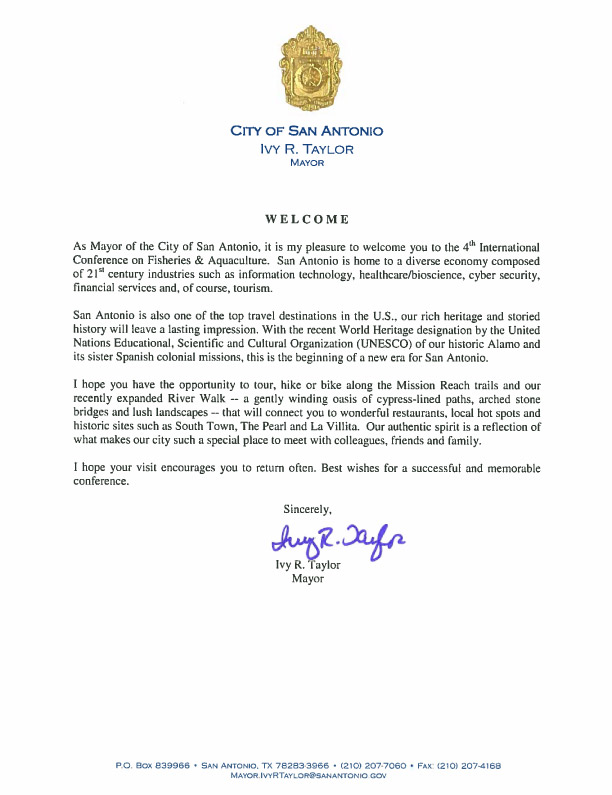
Conference Highlights
- Entrepreneurs Investment Meet
- Fish Farms: Planning a New One
- Aquaculture Industry: Strategic Framework
- Freshwater Fisheries
- Pelagic Fisheries
- Deep Water and Demersal Fisheries
- Shellfish Fisheries
- Marketing and Pricing of Fish
- Regulating Fisheries
- Fish Capture and Fishing Gears
- Fish Pathology & Physiology
- Fisheries Statistics
To share your views and research, please click here to register for the Conference.
To Collaborate Scientific Professionals around the World
| Conference Date | November 28-30, 2016 | ||
| Sponsors & Exhibitors |
|
||
| Speaker Opportunity Closed | Day 1 | Day 2 | Day 3 |
| Poster Opportunity Closed | Click Here to View | ||
Useful Links
Special Issues
All accepted abstracts will be published in respective Our International Journals.
- Journal of Aquaculture Research & Development
- Fisheries and Aquaculture Journal
- Journal of Fisheries & Livestock Production
Abstracts will be provided with Digital Object Identifier by








